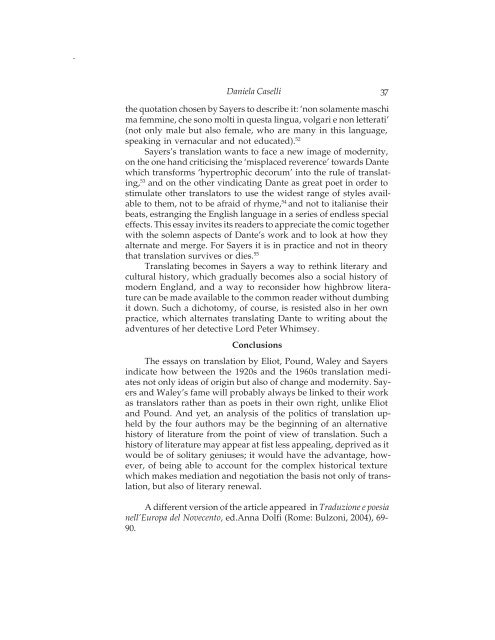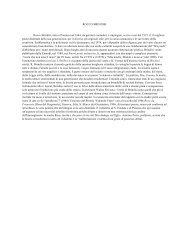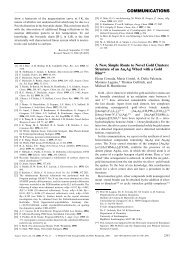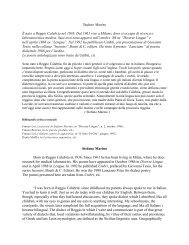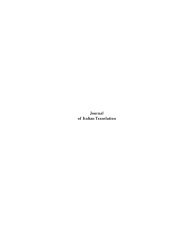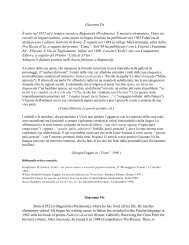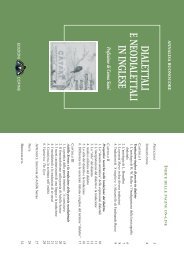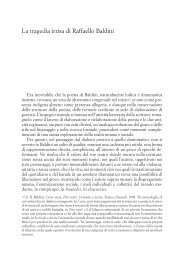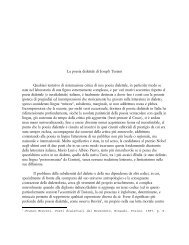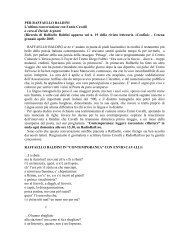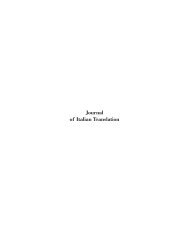Journal of Italian Translation
Journal of Italian Translation
Journal of Italian Translation
You also want an ePaper? Increase the reach of your titles
YUMPU automatically turns print PDFs into web optimized ePapers that Google loves.
Daniela Caselli<br />
the quotation chosen by Sayers to describe it: ‘non solamente maschi<br />
ma femmine, che sono molti in questa lingua, volgari e non letterati’<br />
(not only male but also female, who are many in this language,<br />
speaking in vernacular and not educated). 52<br />
Sayers’s translation wants to face a new image <strong>of</strong> modernity,<br />
on the one hand criticising the ‘misplaced reverence’ towards Dante<br />
which transforms ‘hypertrophic decorum’ into the rule <strong>of</strong> translating,<br />
53 and on the other vindicating Dante as great poet in order to<br />
stimulate other translators to use the widest range <strong>of</strong> styles available<br />
to them, not to be afraid <strong>of</strong> rhyme, 54 and not to italianise their<br />
beats, estranging the English language in a series <strong>of</strong> endless special<br />
effects. This essay invites its readers to appreciate the comic together<br />
with the solemn aspects <strong>of</strong> Dante’s work and to look at how they<br />
alternate and merge. For Sayers it is in practice and not in theory<br />
that translation survives or dies. 55<br />
Translating becomes in Sayers a way to rethink literary and<br />
cultural history, which gradually becomes also a social history <strong>of</strong><br />
modern England, and a way to reconsider how highbrow literature<br />
can be made available to the common reader without dumbing<br />
it down. Such a dichotomy, <strong>of</strong> course, is resisted also in her own<br />
practice, which alternates translating Dante to writing about the<br />
adventures <strong>of</strong> her detective Lord Peter Whimsey.<br />
Conclusions<br />
The essays on translation by Eliot, Pound, Waley and Sayers<br />
indicate how between the 1920s and the 1960s translation mediates<br />
not only ideas <strong>of</strong> origin but also <strong>of</strong> change and modernity. Sayers<br />
and Waley’s fame will probably always be linked to their work<br />
as translators rather than as poets in their own right, unlike Eliot<br />
and Pound. And yet, an analysis <strong>of</strong> the politics <strong>of</strong> translation upheld<br />
by the four authors may be the beginning <strong>of</strong> an alternative<br />
history <strong>of</strong> literature from the point <strong>of</strong> view <strong>of</strong> translation. Such a<br />
history <strong>of</strong> literature may appear at fist less appealing, deprived as it<br />
would be <strong>of</strong> solitary geniuses; it would have the advantage, however,<br />
<strong>of</strong> being able to account for the complex historical texture<br />
which makes mediation and negotiation the basis not only <strong>of</strong> translation,<br />
but also <strong>of</strong> literary renewal.<br />
A different version <strong>of</strong> the article appeared in Traduzione e poesia<br />
nell’Europa del Novecento, ed.Anna Dolfi (Rome: Bulzoni, 2004), 69-<br />
90.<br />
37


